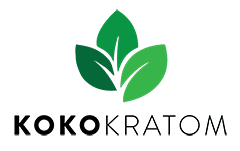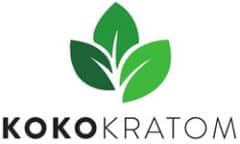The Last Kratom Guide You’ll Ever Need
The sheer diversity of kratom strains can be overwhelming for someone who has never purchased kratom before. Learn all about kratom varieties and set your mind at ease with this quick but comprehensive kratom guide.
What is Kratom?
To begin our quick-start guide to kratom, let’s take a look at what kratom is and where it grows. Kratom or Mitragyna speciosa is an evergreen tree in the coffee (Rubiaceae) family that grows in the humid jungles of Southeast Asia. The tree can reach heights of 100 feet and produces large, dark-green, oval-shaped leaves with a pointed tip and red, green, or white-colored veins on the underside of the leaf.
Traditionally, workers in Thailand and Malaysia would chew on the fresh or dried leaves to help them cope with very long working days in the fields or on the rubber plantations. Today, kratom users around the world consume the fine-ground dried kratom leaf powder by swallowing it with water (‘wash and toss’) or taking it in teas, juices, smoothies, capsules.
What Does Kratom Do?
Thanks to the presence of psychoactive alkaloids, kratom users have reported boosts in energy, senses of increased alertness, and feelings of relaxation, at high doses. In the topical kratom guides on our blog, we explain more about the pharmacology, origins, and traditional uses of kratom.
Kratom Varieties: Thai, Borneo, Sumatra, and Malay

As a widespread plant that grows natively in several countries, the main kratom varieties that we know today are mainly the result of geographical separation and differing climatic conditions. While you will have learnt in our kratom guide, ‘What is Kratom’, that kratom could be found in abundance across Thailand, Malaysia, Indonesia, and Papua New Guinea, legal restrictions have meant that the varieties we can harvest and import today are grown in Indonesia. Here are a few favorites among kratom users around the world:
Thai Kratom
Thai kratom is well known among users for its ability to promote energy, focus, and endurance. The red vein Thai strains are said to be equally as effective for providing pain relief as well as boosting mood and energy. Green-vein Thai is less pain-relieving and more energetic. White vein Thai is particularly popular for its reputation of providing more intensely stimulating effects. Today, the Thai kratom described in our kratom guide is grown and harvested on the various islands of Indonesia.
Malay Kratom
Kratom has a long history of cultivation and use in Malaysia, and is especially popular for its balanced mix of alkaloids that are potentially associated with pain-relieving and mood-boosting effects. For those seeking pain-relief without sedation, kratom enthusiasts have claimed that red Malay kratom could be the perfect choice. Green Malay kratom may potentially provide pain relief and enhanced mood, while white Malay kratom is especially valued for the strong energizing effects users report. Due to restrictions on kratom in Malaysia, most of the Malay kratom described in our kratom guides is harvested in Indonesia, just over the Malay border.
Indo Kratom
Covering a broad range of possible varieties, Indonesian or ‘Indo’ kratom refers to strains that are grown on the islands of Indonesia, including:
- Borneo
- Sumatra
- Java
- Bali
- The Sunda Isles
Indonesian kratom varieties can usually be found growing wild in the old-growth forests of Borneo and Sumatra, and are especially valued for their naturally high alkaloid profile.
How Much Kratom Should You Take?
For beginners, kratom users generally recommend using 1-2 grams of kratom as a guide, waiting for 30 – 45 minutes, and following up with another dose of 1-2 grams if you don’t feel anything. A standard dose for an experienced user could range between 3 and 5 grams of kratom.
Explore the World of Kratom at Koko Kratom
Koko Kratom is a U.S.-based company that sells pure, all-natural premium kratom. Every batch of our red, green, and white kratom is tested in a laboratory for potential contaminants and alkaloid content. We invite you to contact us for help with navigating our website and shop before 5pm weekdays for same-day shipping!



